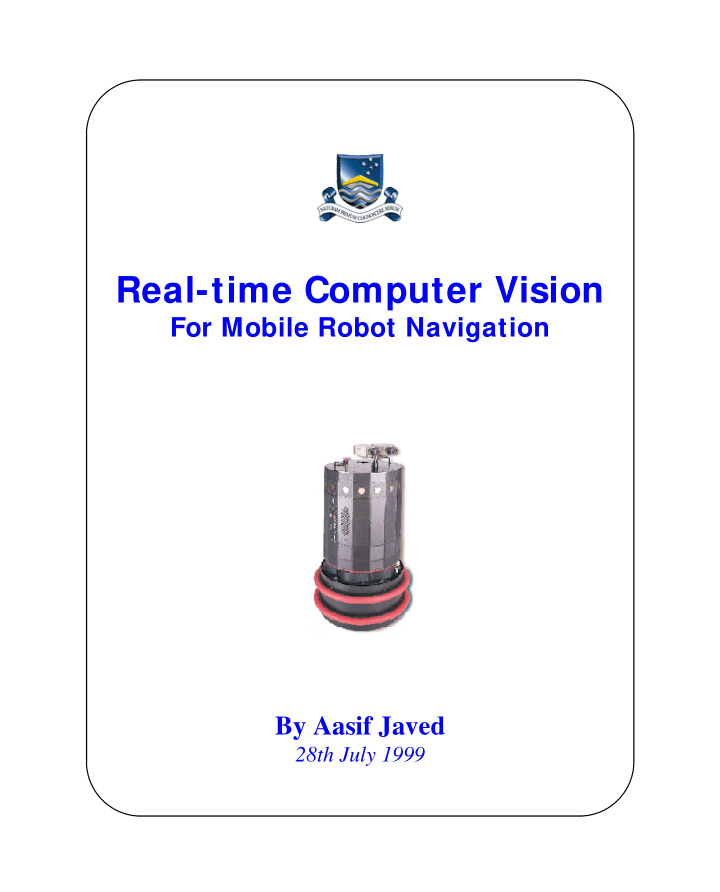



Real-time Computer Vision For Mobile Robot Navigation By Aasif Javed 28th July 1999
Seminar Outline � Introduction � Background & Motivation � Implementation � Schedule � Conclusion
Aims of the Navigation System 1. To navigate using visual features, landmarks. 2. To construct a path between multiple areas . To show that it is possible to use only visual cues to successfully navigate a path. Start & End Landmarks Path & Direction A Navigation Task
Dynamic Landmark Testing Goal Position Virtual Field Turn Back & Look Phase � Backwards Movement � Always Facing Towards Goal � Virtual Field
Landmark Navigation Landmark Snapshot at goal position � Pairing of snapshot and current image � Displacement vector � Summation by reliability
Learning & Navigation Algorithm Learning Phase Number Start of Locations Perform TBL Movement Satisfied? No Yes Perform Turn and 'Zero' Reached Home Perform Homing Movement Position Yet? Yes No Redo Turn and 'Zero' Goal! Navigation Phase Flowchart for learning & navigation
Active TBL Goal Position Conditioned Virtual Below Field Minimum Required The result of the active Turn, Back & Look phase � Similar to TBL � Maintains minimum number of landmarks � Tries to maintain more ‘attractive’ field
Vision Validity Test Movement unbounded Example of ‘drift’ associated with odometric navigation Limit of Movement (bounded) What vision based navigation is expected to achieve
Schedule 100% Multiple Areas Navigation Exp. 1 Dynamic TBL Navigation Exp. 2 Navigation Exp. 3 Chart for Project Progress to date
Development Environment Sony Pan-Tilt Camera Output TV Output Nomad 200 PII Processor Hardware and software configuration
Static Landmark Selection A landmark that resembles its surroundings A landmark that is quite distinct from its surroundings
Biological I nspiration - Insect Based - Complex Task - Little Processing - No 3D Model - TBL Phase - Static Landmarks Selected - Virtual Field
Navigation Task Outcomes Potential vector fields after TBL movements Start & End Potential Vector Field Potential navigation path Start & End Path & Direction
Conclusion � With the use of a TBL phase it is shown to be possible to navigate through a path solely relying on landmark tracking. � The virtual field produced aids in the ability to bound the movement during the navigation phase
Recommend
More recommend